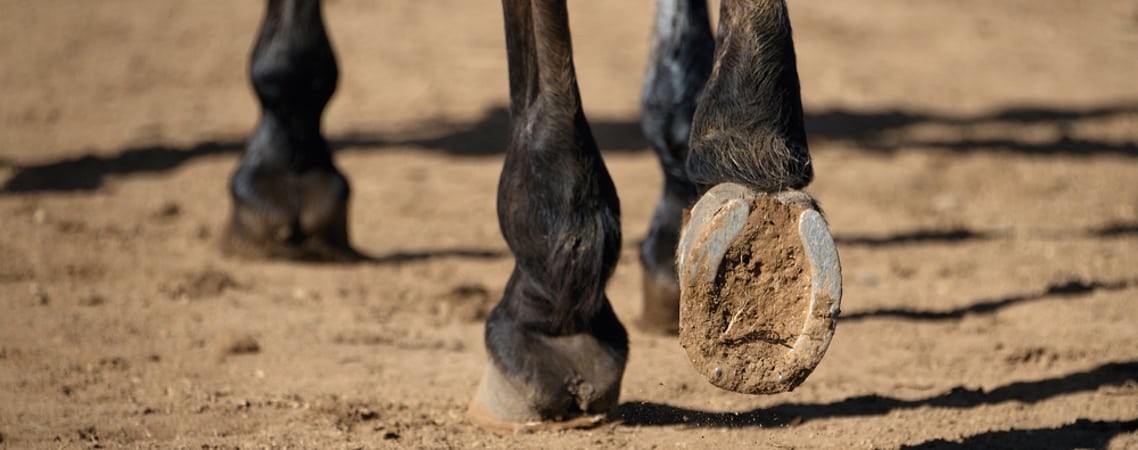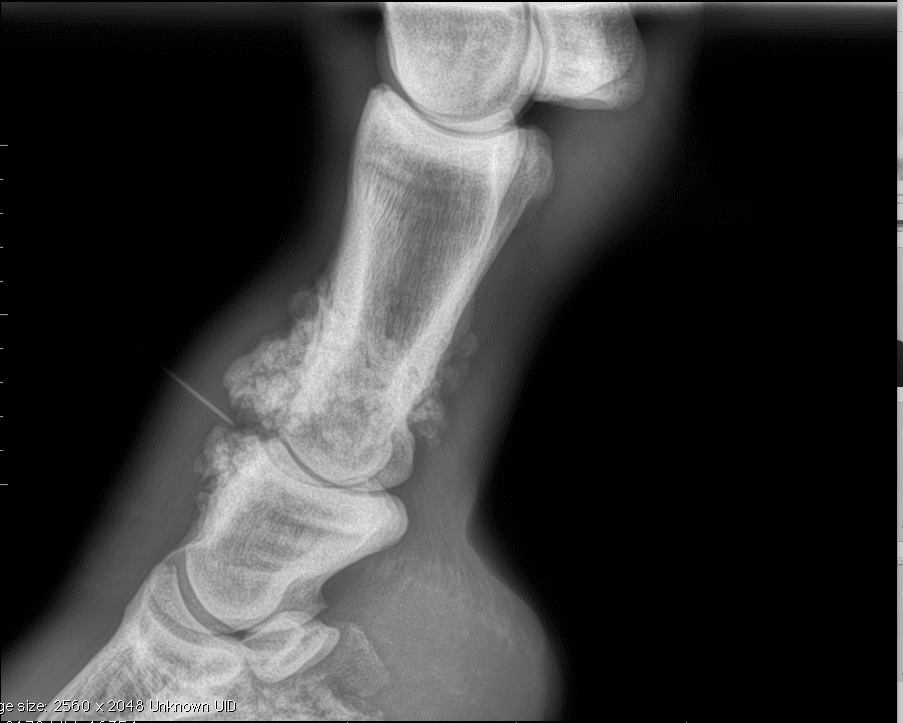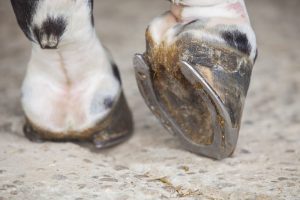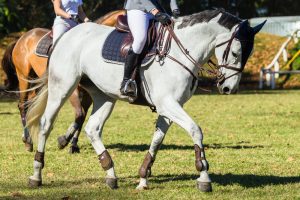
Osteoarthritis (OA)
Osteoarthritis (OA) is a term frequently heard within the equine world with an estimated 60% of lameness disorders being associated with this degenerative disorder.
What is osteoarthritis?
OA is a slow progressive condition affecting both high and low motion joints.
Joints are the meeting points of long bones, the ends of which are covered with cartilage. Cartilage provides a smooth, gliding surface to prevent friction during motion. Inflammation within a joint space releases chemicals that damage and breakdown cartilage leaving the underlying subcondral bone vulnerable. When subcondral bone becomes inflamed it produces and lays down additional bone. This process of new bone formation results in restricted movement within the joint, pain and lameness.
How do I know if my horse has osteoarthritis?
Horses with joint issues will show varying degrees of lameness, positive flexion test of the affected joint or sometimes only generalised stiffness. Early signs of joint disease may go unnoticed so owners should be vigilant in flagging up subtle signs such as joint swelling, localised heat, or subtle lameness. By the time these symptoms are noticed irreversible changes to the joint may already be underway. Common joints affected include the hock, pastern, coffin, fetlock, carpus and stifle joints. The source of pain or lameness needs to be identified via a thorough lameness examination. This usually involves a combination of diagnostic anaesthesia in the form of nerve blocks or joint blocks and x-rays.
Prognosis
What is the prognosis for a horse with osteoarthritis?
There are varying degrees of severity of OA amongst the horse population and also differences in expectations from owners for their horse’s careers. The bottom line being that there is no cure for OA but with numerous options available, we aim to have a horse as comfortable and pain free as possible. With successful treatment many horses are capable of continuing their competitive careers.
Mangement & Treatment
Management
How can I manage my horse’s osteoarthritis and what are my options?
Essentially managing OA can be broken down into two sections, physical management and pharmacological management. Unfortunately, osteoarthritis is progressive in nature and we can only endeavour to do our best to slow down its progression.
Physical management involves making small changes that can make a huge difference to your horses comfort. Provided the degree of lameness doesn’t deteriorate, it is paramount to keep the horse active. Extra time spent warming-up, avoid working on hard, concussive surfaces at any pace faster than a walk. Keeping your horse’s weight under control reduces pressure on the joints. Having your farrier and vet assess your horse’s hoof balance will neutralise pressure through the limb.
Treatment
Pharmacological management involves the usage of drugs to compliment physical management. Endless studies have gone into safety and efficacys of the usage of various treatment in relation to OA but there is no one size fits all. Here is a list of pharmacological techniques that your vet may recommend:
- NSAIDs (Non-steroidal anti inflammatory drugs) – these are oral painkillers/anti-inflammatories often useful in the management of chronic cases.
- Corticosteroids – used as intraarticular injections, there are several types of steroid all of which are aimed at decreasing ongoing inflammation within the joint.
- Hyaluronic acid – often used in combination with corticosteroid treatment, it is a naturally occurring substance in synovial fluid that acts as a lubricant within the joint, aids in providing nourishment and removing waste products from the avascular cartilage, and is an important constituent of the synovial membrane barrier.
- Pentosan polysulphate – shown to help with hyaluronic acid production within joints, which is essential for good joint function as described above.
- PAAG Hydrogels – Another intraarticular preparation, often reserved for those unresponsive to conventional corticosteroid treatment. These are aimed at reducing pain, preserving cartilage and promoting joint mobility. In essence providing shock absorption capability thus acting as a ‘cushion’ within the joint
- Biphosphonates – these are designed to have an effect on excessive turnover of bone which is part of the arthritic process.
- Autologous products – these are products taken from the patient processed and injected back into the patient. These may include extracting blood, bone marrow or fat in a highly specialised process.
- Joint supplementation – often with chondroitin sulphate and glucosamine as the main components, these contain the building blocks for healthy cartilage.
As reiterated earlier, the management and treatment of osteoarthritis is a complex combination of physical and pharmacological therapies where each horse is an individual. Have your horse examined by a vet where a treatment plan can be tailored accordingly.




Recent Comments